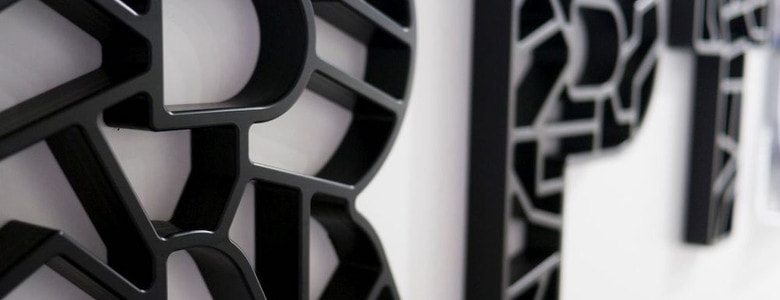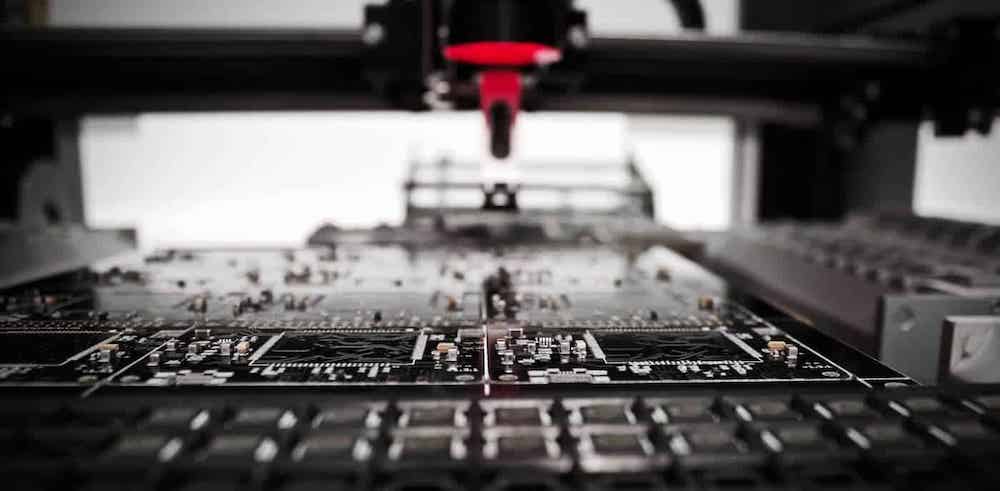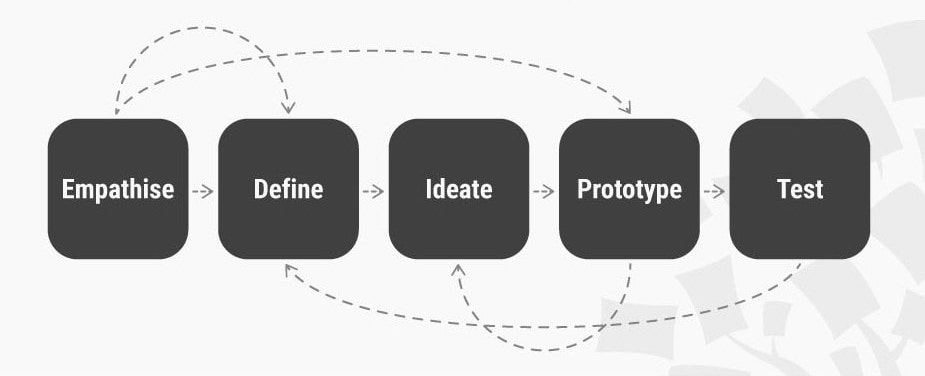What is Rapid Prototyping: Everything You Should know in 2021

What is rapid prototyping? Best suited rapid prototype process guide. It also includes rapid prototypes methods & quick prototyping techniques What is Rapid Prototyping: Rapid Prototype process Guide 2020
How does rapid prototyping work? A comprehensive fast prototype definition, application & advantages overview
What is rapid prototyping?
With the innovative rapid prototyping process, companies can produce high-precision prototypes directly from CAD data faster than ever beforeThe prototypes produced not only look like end products - they also work that way
The design process and function can be optimized quickly and easily, which is associated with numerous advantages for companiesIn addition to the rapid production of prototype parts, also includes 3D printing, CNC-controlled machines, and some other manufacturing methods
In this article, you will find out what exactly rapid prototyping is, what advantages the process has, how it works, and in which areas it can be used.
Table of Contents:
- What is Rapid Prototyping?
- Rapid Prototyping Definition
- The Evaluation of Rapid Prototyping System
- Features of the prototyping model
- What is a prototyping technique?
- What are the benefits of rapid prototyping?
- Rapid prototyping manufacturing process
- Rapid prototyping: areas of application
- Rapid Prototyping Materials
- Conclusion
What is rapid prototyping?
Rapid Prototyping definition
The term rapid prototyping, literally translated as "fast model building", is used in various ways. But it can be generally referred to as a fast production method for sample components and demonstration models
The prototype is the actual representation of a 3D CAD model It makes it possible to quickly materialize an idea and to validate the relevance of certain choices during the design process of the whole Optimizing product development can result in lower manufacturing costsMany rapid prototyping techniques exist, including that of 3d printing technologies.
The actual representation of this object is feasible through different techniques, such as:
- 3D printing
- CNC machining
- thermoforming that perform its shaping
These manufacturing methods make it possible to quickly obtain the desired prototype, with perfect precision and undeniable quality, at a relatively low cost compared to conventional methods.
This high-speed computer aided design cad allows rectifying the model in a short time and to proceed without delay to its validation, even to the production of the part.
The Evaluation of Rapid Prototyping System
Initially, rapid prototyping was used exclusively to describe processes for the rapid production of samples, models, or prototypes using generative processesDigital and three-dimensional design data must always be available for production
The proof of concept of a data interface is required for implementation This is used to make a precise description of the object geometries that can be used by the rapid prototyping systems.
In the course of time, the terms rapid tooling and rapid manufacturing have been combined to form the generic term rapid prototyping
Rapid tooling means the quick production of tools using the same process that is used in rapid prototyping Functioning end products are created with instant manufacturing.
This is particularly interesting for the production of smaller quantities or individualized productsNeither fast prototyping nor rapid tooling is aimed at producing an end productThis is how rapid manufacturing differs from the other two applications.
- Features of the prototyping model
- Characteristic
- Contents
- Progressive development
- Quickly develop models and improve and supplement the system through feedback
- User Engagement
- Solve the difficulty of demand analysis by inducing user participation
What is a prototyping technique?
Prototyping is a system product development technique that is taken to enhance the effectiveness of communication between developers and users.
It should be borne in mind that the important point when performing the prototyping technique is the work for mutual understanding and knowledge exchange between developers and users. If you take a general analysis method, you can bring different understandings between the two, so let's create a communication tool called a prototype.
What are the benefits of rapid prototyping?

Ultimately, prototyping changes the traditional software development cycle. In other words, the requirements analysis stage should be extended to include prototyping. The user's requirements can be well understood by performing prototyping several times.
Therefore, when prototyping is performed when developing an information system, the biggest advantage is that user satisfaction can be increased. Other effects that prototyping can bring include first quality assurance and acceptance of user demands.
The use of rapid prototyping is associated with a whole range of advantages for companies.
We present the most important of them to you in the following:
Faster production of the prototype
Using the rapid prototyper process, prototypes can be produced much faster than with conventional methods. The duration of production varies depending on the manufacturing process chosen and the complexity and size of the part or assembly to be produced. As a rule, however, this does not take longer than a few days. Thanks to the fast production, models, and prototypes can be used much earlier and more frequently.
Great time and money savings

Rapid prototyping does not require any previous costly or time-consuming tool manufacture. This means that many different geometries can be created with the same rapid prototyping device. Errors and inaccuracies can be identified much better and faster using the physical model, which is also associated with significant time and cost savings.
Higher motivation and better feedback through physical models
The real models that can be created quickly increase the motivation and commitment of employees. Physical models can be viewed and checked much more precisely and in greater detail than would be possible on the screen. This means that employees can give clear feedback for an improved products.
The trial and error process is improved
On the way to the ideal end product, there are usually a lot of tests and improvement runs. With rapid proto and 3D printing, this so-called trial-and-error process can run much faster and more easily
By discovering and correcting errors in the design at an early stage, costs for revising the computer-aided design cad and changing tools can be greatly reduced in the further course of the production.
Less waste
The generative manufacturing process used in rapid prototyping can reduce a lot of waste that would normally result from other manufacturing processes such as milling, turning, or grinding. This conserves resources, saves costs, and relieves the burden on the environment.
Uncomplicated production of personalized and individual products
For small quantities of up to 100 parts, the rapid prototyping process brings significant cost and speed advantages compared to traditional manufacturing methods. This is particularly worthwhile for companies that offer individual or personalized final product.
The rapid prototyping manufacturing process

In the meantime, more than 30 different rapid prototyping methods are known world We present the most important and most common variants here:
Stereolithography (SLA)
Stereolithography is the oldest rapid prototyping processWith the help of an ultraviolet laser beam, liquid synthetic resin is curedThe process is considered to be extremely precise and enables the production of a high-quality surface finish
At the same time, however, the parts produced using stereolithography have a comparatively low mechanical strengthThe method is used particularly in the manufacture of individualized parts and final products.
3D milling
A machine with at least five controlled or controllable axes is required for 3D millingThe milling head can normally be swiveledThe workpiece to be machined is positioned on a driven rotary table, which means that every point on the workpiece can be easily reached
As a rule, 3D milling is used to create / manufacture large components made of plastic, foams, Ureol, or PUR sheets and is considered to be extremely precise and economical.
3D powder printing
In the 3D powder printing process, a large number of polymer plaster layers that are tenths of a millimeter thick are glued together in full colorThis full color makes 3D powder printing particularly popular for exhibition and demonstration models.
Vacuum casting
With the help of a silicone mold (silicone tool), existing molded parts can be duplicated during vacuum casting A vacuum chamber can prevent air inclusions, resulting in a particularly precise result.
The method is particularly for low volume manufacturing and when the result is to be very precise, complex geometries are used.
Selective laser sintering (SLS) and selective laser melting (SLM)
With SLS and SLM, the powdery raw material is melted and the desired geometry is used to create in layers The two processes are ideally suited for the product development of functional models as well as small series and also enable the processing of metals.
Fused Layer Modeling (FLM)
The fused layer modeling method is also known as the extrusion processThe respective object is produced by local melting assembly using a heated nozzle with subsequent extrusion
The parts manufactured with the FLM method have a high mechanical and thermal load capacityA disadvantage of the method is the relatively rough surfaces and the comparatively low level of detail.
Layer Laminate Manufacturing (LLM)
In the layer laminate manufacturing or laminated object modeling method, layer contours are cut from paper, ceramic or plastic filmPut simply, thin layers are cut individually into shape and then glued togetherIf you compare the LLM or LOM method with other processing options, this has a lower level of accuracy.
PolyJet
In the PolyJet process, small photosensitive polymer droplets are applied to a work platform with a print head and are then cured directly with a UV laserSeveral materials can be combined during 3d printingThe PolyJet variant is particularly suitable for the production of realistic prototypes.
Rapid prototyping: areas of application
The main area of application of fast prototyping is the production of functional prototypes with relatively high complexity. With the process, product development can be much faster and more cost-effectively.
The use of CAD programs is also associated with a significantly improved design teams workflow. The product design development process is used in the following industries and areas, among others:
- Space industry: By manufacturing high-strength components that can withstand extreme loads, are quickly available, bring significant weight savings, and are also even less cost-intensive, the space industry benefits particularly from the use of the rapid prototyping process(Weight savings through bionic structures)
- Aircraft industry: Quick prototyping has become indispensable in the aircraft industrySince there are now approved materials for additive manufacturing of the final product, it is no longer possible to imagine this niche market without itIn the aviation industry, too, bionic structures enable enormous weight savings compared to conventional technologies.
- Architecture: The high-precision and filigree optics make the rapid prototyping process so popular in the architecture industry.
- Mechanical engineering: From planning to prototype construction to small series, rapid prototyping in the field of mechanical engineering represents an economical alternative to conventional manufacturing processes.
- Automotive industry: Rapid prototyping enables the fast development of complex and/or individualized car components in the automotive industry.
- Healthcare: In the healthcare sector, the rapid prototyping method is primarily used to manufacture prostheses and implants.
Prototyping form
Prototyping can take many forms depending on its purpose
- If the purpose is only to analyze the user's needs, a prototype for disposal can be created
- If it is to be developed as quickly as possible, there is a quick and dirty prototype that is developed using 4GL or the like.
- There may be prototypes developed for testing after detailed design and implementation have been completed and before mass production.
- There is a prototype that shows examples of input/output, but does not have actual data and does not implement procedural logic
Finally, there is an evolutionary prototype that evolves into a final system by continuing to evolve the developed prototype
Since this prototype additive manufacturing analyzes the user's needs at each step and repeats prototyping, it ignores the traditional life cycle. After all, the true prototype will have to be an evolutionary prototype. In particular, when developing with the RAD technique, the prototype at each stage must lead to an actual completed system.
A wide range variety of materials are used depending on the method used.
Plastic rapid prototyping
Plastics are preferably used in stereolithography processes, laminated object modeling, fused deposition modeling, multi-jet modeling, polyamide casting, selective laser melting, selective laser sintering, and in space puzzle molding.
In the stereolithography method, for example, liquid and light-curing thermosets or elastomers are used, which are then cured in layersIn contrast, wax-like thermoplastics and UV-sensitive photopolymers are used in multi-jet modelingThe SLS process also uses thermoplastics such as polyamides, polycarbonates, and polyvinyl chlorideABS is preferably used in FDMPlastics have the advantage that they have excellent physical properties.
Rapid prototyping metal
Metals are used in electron beam melting, laser deposition welding, laser engineered net shaping, SLM, SLS, and, for example, in multi-jet modelingIn principle, an explicit distinction must be made here according to the respective physical state of the starting material
For the actual metal process, the focus is currently on powder-based processes, while solid or liquid metals are used, for example, in special stereolithography processes and layer laminate processes
SLM processes, on the other hand, are used exclusively for metal 3D printing design You can choose from metals such as stainless steel, aluminum, titanium, or tool steelModels made of metal always have extremely high strength values.
Rapid prototyping ceramics
The additive manufacturing prototyping techniques LOM, SLM, and SLS use ceramic as a materialFor ceramics produced in this regard, diverse areas of application and possible applications are revealed
There are primarily complex monolithic ceramics in a manageable number as well as structures that require a certain micro- and macroporosity are exposed to comparatively high temperatures.
Other Fast prototyping materials
There are a wild range materials that can be used in various fidelity prototypes for example, the material concrete is used in contour craftingIn contrast, paper can be used in the LOM.
Experimenting with sand or glass powder is preferred in multi-jet modeling, while various granulates and powder forms play a major role in binder jetting.
However, fidelity prototype developments here are still a long way from reaching the end of the flagpoleMany companies are already testing other material solutionsTests have shown that even moon dust is suitable as a material for some prototyping processes.
Conclusion
From the aircraft industry to architecture and healthcare: Rapid high fidelity prototype enables fast, yet high-quality production of models, samples, and prototypes in almost all industries
But tools and end products are also increasingly being manufactured using quick prototyping, of which there are now more than 30 different processes worldwide The most important advantages of the method include:
- the fast and inexpensive production
- the improved trial-and-error process
- reduction in the volume of waste and the simple possibility of manufacturing personalized and individualized products.
Another very important factor is the implementation of complex 3D constructions that cannot be produced using other processes.
Why Your Company Should NOT Invest In 3D Printing Machine ?
3D printing is a new emerging technology, but here is a list of 22 Raisons to consider before buying an in house 3D printing machine ?
Read MoreWhat Is Urethane Casting? [Everything You Need To Know]
What is urethane casting? How does urethane method work? Comprehensive information about vacuum/urethane casting advantages and disavantages.
Read MoreWhat Is Prototyping In Design Thinking [Fidelity Prototypes]
6 Major Steps of design thinking for great final product: Understand, Observe, Define, Find ideas, Develop prototypes,Testing
Read More
